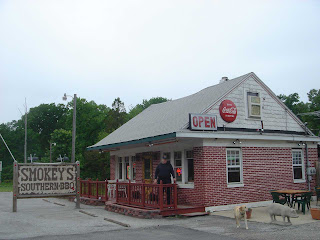Following the Johnson Wax tour, we asked the employees at the Golden Rondelle, which functions as the visitor’s center, for recommendations for some good places to eat in Racine. “Not a national chain and somewhere that had been there for 50 years" we said. Two people said “Kewpee.” The third turned up her nose. After a short discussion (and some other places named as well) , we knew we had to check out Kewpee.
The Kewpee was part of a national chain founded in 1923. At its peak, there were over 400 locations. But the depression and beef shortages during World War Two were not kind to the Kewpee and today only five are left including the one in Racine.
The Racine Kewpee is the third one on the very location in downtown Racine. The first was built in the 1920’s. The second in 1939. The current one was built in 1997.

One last piece of Kewpee history. In a 2001 interview, Dave Thomas, founder of Wendy’s, said that as a child he lived near the Kalamazoo, Michigan Kewpee. He said that Kewpee influenced him when he founded Wendy’s in Columbus, Ohio in 1969.



















































